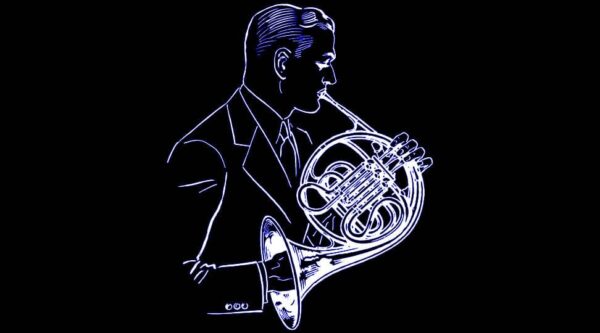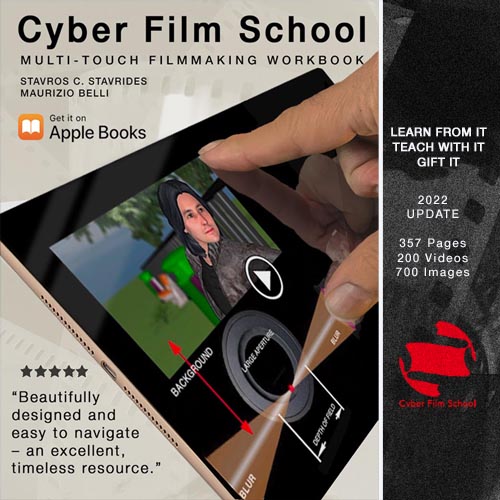How to obtain the right music for your piece, composing a score around music cues, sample based music, and working with a composer.
Contributed By Glen Berry, Edited by Stavros C. Stavrides
IMPORTANT CONCEPTS
- Canned Music Will Not Work
- Composers Are Accessible
- Loop Based Music Is Popular and Free
Although many moviemakers acknowledge the importance of music to the emotional impact of a movie, it is not always understood how to go about getting the right music in the soundtrack.
Pre-recorded Music
Novice moviemakers often make a connection between the term “soundtrack” as used by music marketers to sell a collection of songs used in a motion picture and the term “soundtrack” that we use to define the elements that accompany the movie’s picture. This leads many beginners to seek out pre-recorded songs, usually by popular bands, to paste in as ‘wallpaper’ in their motion picture.
This is a bad idea for two reasons – one being legal, the other creative:
The first, and least important (unless you get busted), is that it’s illegal. Yes, even in an amateur film, and yes – even in a student film. It is illegal to use a copyrighted piece without permission. You can seek permission from the rights holder and it may not be as difficult to obtain as you might imagine. Even if we didn’t want to obtain the rights, we might wink and nod at using a song without permission if it was actually an effective tactic. It is not.
The second reason why you shouldn’t use popular songs in your movie is that the emotional beats of the music are unlikely going to match the emotional beats of your movie. You can retime your images to match the music but then you will have a music video.
If you listen to how these kinds of songs are used in a Hollywood picture, you will realize they are not used as wallpaper. Even when a popular song is used in a big-budget movie, usually only part of the song is used in a scene, transition, or action sequence. An entire song might be used for a montage or the opening and closing credits. It is not pushed into the movie to drone on and on in the background under dialogue.
Presumably, you have an original story to tell and don’t want to make it conform to someone else’s concept using someone else’s timing and structure. Nor do you want to compete with an audience’s preconceived idea of what the popular song has come to represent.
Music Cues
If you have your own story to tell, you will likely want the music to conform to the picture, not the other way around. To do this, you will need to identify the emotional moments in your piece, the turning points, the climaxes of scenes, and the critical lines of dialogue. One can refer back to the “Dramatic Curve” to help identify these moments, called “cues”.
We explore the Dramatic Curve in scene construction in our article
“Build Your Shot List Like a Pro“.
A piece of music that is designed around cues that are in sync with events on the screen is called a “score”.
A score is created by a composer. The director must have a general sense of the cues in the scene, and what they want to accomplish with music in that scene – at least as a starting base when approaching a composer.
Working with Composers
The beginning filmmaker may often find the prospect of working with a composer to be a bit intimidating, and that is understandable.
However, there is no shortage of composers out in the world that are eager to work with filmmakers to create a score for a short film. Hundreds of them are found on film-related social media sites. Most will work for free or very little, and some are very skilled, talented and experienced.
This article is drawn from the “Sound” chapter in Cyber Film School’s
Multi-Touch Filmmaking Textbook
Even if the director is not music savvy, a competent composer can help guide the visualization to suit your vision. An able composer can help identify the cues in the picture and read the emotional content on the screen, then provide you with options that create music around that emotion.
The most important thing to keep in mind is that each composer has a style. It is unreasonable and unwise to ask a composer to create something that is outside their repertoire.
For some pieces, especially longer-form works, a moviemaker may need more than one composer if they wish to utilize different styles of music.
That is really the critical decision that the director must make: they must know the style of music they wish to use and choose a composer that matches that style. The easiest way to do this is to listen to samples of their work to see if it will work for your piece.
It is advised to bring your composer in early, before the picture lock. Presenting a picture lock and THEN asking for a score to be written in sync not only confines the creative potential of the composition but will likely insult a talented composer.
If before the fine cut, you both work out the cues, make sure to allow time for the composer to provide some early samples for your editor to cut with. This allows an organic interplay between picture and sound – each element influences the other. This is creative collaboration, and how worthy projects get made.
Working Without a Composer
If finding a composer is beyond the scope of the project, a viable alternative is creating a score with loop-based samples.
A wide range of resources is available at low or no cost that allows the moviemaker to create multi-track music synchronized to picture.
Royalty-free samples may request a small fee for world rights. These samples are loops of instruments (i.e. guitar, drums, piano, strings) as well as synthesized sounds and beats that can be used to construct themes.
Creating a basic score for a short film can be done in a few hours, and it will add enormous value to the project. One drawback to this approach is that the samples from popular programs end up being used over and over again, and one need only attend one or two short film festivals to hear these same sounds in more than one movie.
However, that is only a pitfall of the lazy as the internet abounds with royalty-free samples that can be imported into most of these programs.
With such tools, there is no excuse not to have cue-based musical elements in your soundtrack.
You may start with your own loop-based musical elements but a composer will add enormous value to your project for next to no cost and little effort. It makes very little sense for the filmmaker not to work with a composer, and the sooner one makes that step the better.
SUMMARY
- A pre-recorded song will not match the emotional cues of your movie in the same way as a custom score.
- It is not difficult to find a composer willing to create a score for your film; most are talented and professional.
- Many programs are available to create loop-based music in sync with the image on the screen. There are many web resources with libraries of loops that can be downloaded. Some programs, like Sound Track Pro, GarageBand, etc come with a collection of samples.


